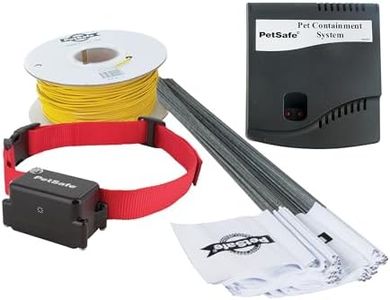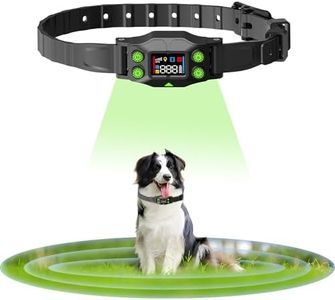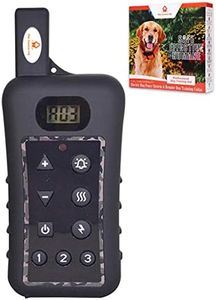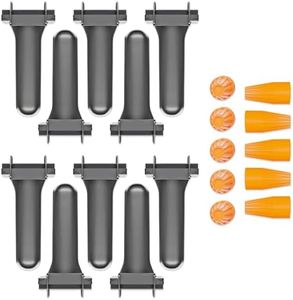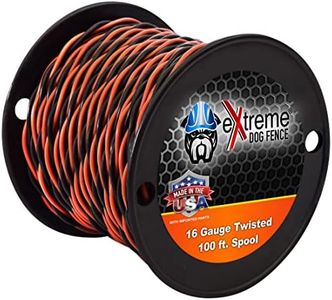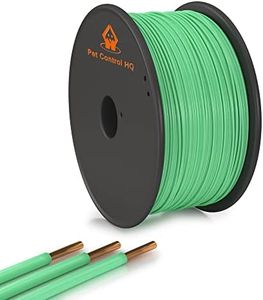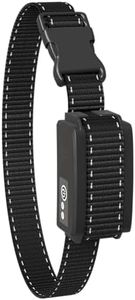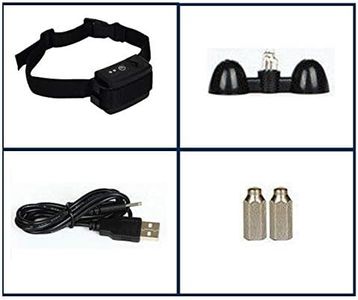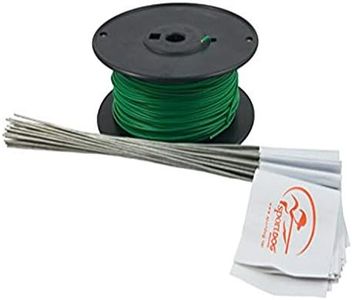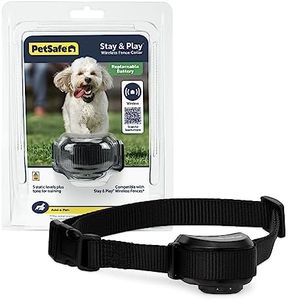We Use CookiesWe use cookies to enhance the security, performance,
functionality and for analytical and promotional activities. By continuing to browse this site you
are agreeing to our privacy policy
10 Best Electric Dog Fences
From leading brands and best sellers available on the web.By clicking on a link to a third party's website, log data is shared with that third party.
Buying Guide for the Best Electric Dog Fences
Picking the right electric dog fence is all about understanding your dog's needs, your yard layout, and the type of containment you want. An electric dog fence can help keep your pet safe within a specific boundary without building a physical fence. When choosing, think about your dog's size, temperament, and how much space you want to provide. Also, consider your comfort level with installation and maintenance. By focusing on some key specifications, you can make sure you find a fence that works well for both you and your furry friend.Coverage AreaCoverage area refers to the maximum amount of space the electric dog fence can enclose. This is important because you'll want the fence to cover your entire yard or the specific area where your dog will play. Coverage is usually measured in acres or square feet. Small coverage options are suitable for tiny yards or patio spaces, medium coverage fits most typical suburban homes, and large coverage is meant for bigger properties or open fields. To pick the right coverage, measure the space where you want your dog to stay, and ensure the fence can handle at least that amount; oversized coverage won't hurt but unnecessary, while too small means your boundaries will be limited.
Wired vs. WirelessElectric dog fences come in two main types: wired (which use a physical wire placed underground to mark the boundary) and wireless (which create a boundary based on a signal from a central transmitter). Wired fences offer more precise boundaries and can be tailored to fit awkwardly-shaped yards, but they require more work to install. Wireless fences are easier to set up, as you just plug in the transmitter and set the range, but the boundary is always circular and might not suit all spaces. If you want a neat, custom shape and don't mind some installation work, choose wired; if you prefer ease and have a simple lawn shape, wireless could be a better fit.
Correction MethodThe correction method refers to how the system warns or corrects your dog when they approach or cross the boundary. Most electric dog fences use a collar that gives a static (mild electric) pulse, a vibration, or a sound beep. Some systems let you adjust the intensity or type of correction. Low settings are more suitable for small or sensitive dogs, medium for most breeds, and higher settings for large, stubborn dogs. It's important to match this to your dog's temperament and size—gentler corrections for timid pets, stronger corrections only for dogs that tend to ignore boundaries.
Collar Features and AdjustabilitySince the collar is what your dog wears all day, its features are crucial. Look for collars that are adjustable to fit different neck sizes and have comfortable, waterproof materials for outdoor use. Some collars allow you to change correction levels or even use different corrections for multiple dogs. If you have small dogs, look for lightweight, slim collars; for large dogs, sturdier ones are better. If you plan to have more than one dog, make sure the system supports multiple collars.
Expandable SystemExpandable systems allow you to increase the coverage area or add additional collars for more dogs. This is important if you may move to a larger property in the future or get more pets. Systems with expansion options are often a good investment because they can grow with your needs, while non-expandable systems are better suited for fixed, single-dog situations.
Battery Life and Power SourceThe dog’s collar requires power—either built-in rechargeable batteries or replaceable batteries. Longer battery life means less frequent charging or changing, which is more convenient for you and safer for your pet. Rechargeable collars are eco-friendlier but need regular charging, while replaceable batteries might last longer between changes but mean ongoing battery costs. Choose based on your lifestyle: if you prefer low maintenance, longer-lasting batteries may be best; if you don’t mind regular charging, rechargeable options keep things simple.
